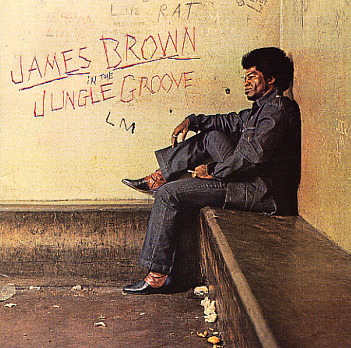HAPPY NEW YEAR!!!



For all my watch buffs here is a little treat for you. Audemars Piguet approached rapper Jay-Z to co-design its latest watch, the Royal Oak Offshore. A portion of the proceeds will go to the S. Carter Scholarship Fund. These limited edition timepieces will come in 3 versions:
Stainless Steel – $24k
30 Rose Gold – $44k
20 Platinum – $70k

Pharrell Williams was selected by designer MARC JACOBS to team with NIGO to design sunglasses for LV’s winter 2007 collection. Here are some samples from the collection.

Bulgari and Marriott have partnered to compete in one of the hottest sectors in the hotel industry: serving customers (Gen X) who frequent chic urban lodgings from hoteliers W, Kimpton, and Ian Schrager. The Bulgari hotels have the same quality standards as the Ritz-Carlton, with amenities like complimentary unpacking services and personal shoppers, this hotel will suit the needs of the modern jetrosexual. The current locations are in Milano and Bali.

Happy Holidays!!! hope you guys had fun over the weekend. here is my post xmas news blurb, it will be much more exciting in 2007! have a great new year. xoxoxoxo sam
Scary reality.. Sesame Street is showing kids how to cope with a parent being deployed to war
35 Most outrageous fees and how to avoid them
I’m sorry y’all but I love Britney. Once she finally looks slightly smooth she f’s it all up.
Finally we can get smashed in Orchard City, CO!
Dumbass: A 21-year-old German woman who didn’t feel like going to work
 What did James Brown do?
What did James Brown do?
Even now, half a century after the release of his first single, “Please Please Please,†and days after his death of congestive heart failure, at 73, early on Christmas morning, that’s a surprisingly difficult question to answer.
He was a singer, of course, though he was perhaps better known for his grunts and his patter. “I wanna get up and do my thing. (Yeah!) Can I get into it? (Yeah!) Like a … (What?) Like a … (What?)†With an introduction like that, who cares if the song never starts?
He was a dancer, too, though that seemed less like the cause of his appeal and more like an effect of it. He moved as if he simply couldn’t help himself, and he toured that way too. His scheduled New Year’s Eve concert in New York was to be just one more date on his latest tour; tonight, for example, he had been scheduled for a concert in Waterbury, Conn. (Now that’s dedication.)
Most of all, he was an old-fashioned, hard-driving bandleader — which is to say, an anomaly. In an era of rock stars he often seemed like the second coming of Cab Calloway; the old big band had gotten smaller, but the man in front had only grown.
And while his rock ’n’ roll counterparts chafed at the idea of being mere entertainers, Mr. Brown never stopped bragging about being “the hardest-working man in show business.â€
He was black and proud, he was a sex machine, but he was also a brilliant conductor, known for coaxing great performances out of the singers and musicians behind him. That, most of all, is what Mr. Brown did.
 So celebrating the James Brown sound also means celebrating the musicians who created it. When he delayed the fourth and final beat of a measure, the drummer Clyde Stubblefield warped time in a way that helped inspire a whole constellation of rhythm-obsessed genres. Bobby Byrd (he of the famous “Yeah!†and “What?â€), Maceo Parker, Fred Wesley, Bootsy Collins, Lyn Collins, Vicki Anderson: to love James Brown is to love them too. And not enough has been written about Jimmy Nolen, the visionary guitarist whose spidery licks helped inspire two generations of post-punk bands. (When people talk about “angular†guitars, they often mean “Jimmy-Nolen-ish.â€)
So celebrating the James Brown sound also means celebrating the musicians who created it. When he delayed the fourth and final beat of a measure, the drummer Clyde Stubblefield warped time in a way that helped inspire a whole constellation of rhythm-obsessed genres. Bobby Byrd (he of the famous “Yeah!†and “What?â€), Maceo Parker, Fred Wesley, Bootsy Collins, Lyn Collins, Vicki Anderson: to love James Brown is to love them too. And not enough has been written about Jimmy Nolen, the visionary guitarist whose spidery licks helped inspire two generations of post-punk bands. (When people talk about “angular†guitars, they often mean “Jimmy-Nolen-ish.â€)
In this sense the bandleader was also a brand leader: in the 1970s, especially, “James Brown†was not just a star, but an executive, a producer, a franchise. His name (sometimes his face too) on the record label meant you were getting a James-Brown-approved product. And if you went to see the J.B.’s, the backing band that morphed into a terrific stand-alone group, you were also seeing a reflection of Mr. Brown, even if he was nowhere near the building.

Bandleaders have always (of necessity) been businessmen too, but Mr. Brown was wise enough to be unembarrassed by the echo. There was a hint of corporate precision in the way he led those musicians onstage: each wiggle of the hip or flicker of the hand was an urgent memo from top management; each post-show conversation was a performance evaluation. Even his political program reflected this obsession; his vision of black power was in large part a vision of black spending power, and he saw no reason why a black nationalist shouldn’t also be an eager (and successful) black capitalist.
The musician as executive: this is the not-quite-new notion that defines the current musical era. Pop stars flaunt their corporate ties; rappers brag about their business acumen (real or, more often, imaginary); rock bands cheerfully acknowledge that they are brands on the run. And while some listeners may be nostalgic for a time when pop music was untainted by corporate chic, Mr. Brown’s career is a reminder that the old-fashioned bandleader and new-fangled pop-star C.E.O. really aren’t so far apart. When he called himself “the hardest-working man in show business,†the emphasis was on “working†and “business.â€
If James Brown, the musician, has also been influential and enduring, it’s not just because of his evergreen hits, which still sound vigorous, even though they have been reissued and covered and sampled ad nauseam. And it’s not just because of all the styles he helped inspire, from Nigerian Afro-beat to Brazilian funk-rap.

It’s also because, decades before the rise of computer music, he proved that some virtuosos do their best work with no instruments at all. In that sense his true heirs today are producers like Timbaland: knob-twiddling masterminds who program sounds instead of conducting them, beat-obsessed visionaries who keep reinventing Mr. Brown’s propulsive templates, serial collaborators who understand the business of pop music.
No one could ever do all the things Mr. Brown did. But here is what’s more impressive: musicians are still finding new ways to do some of them.